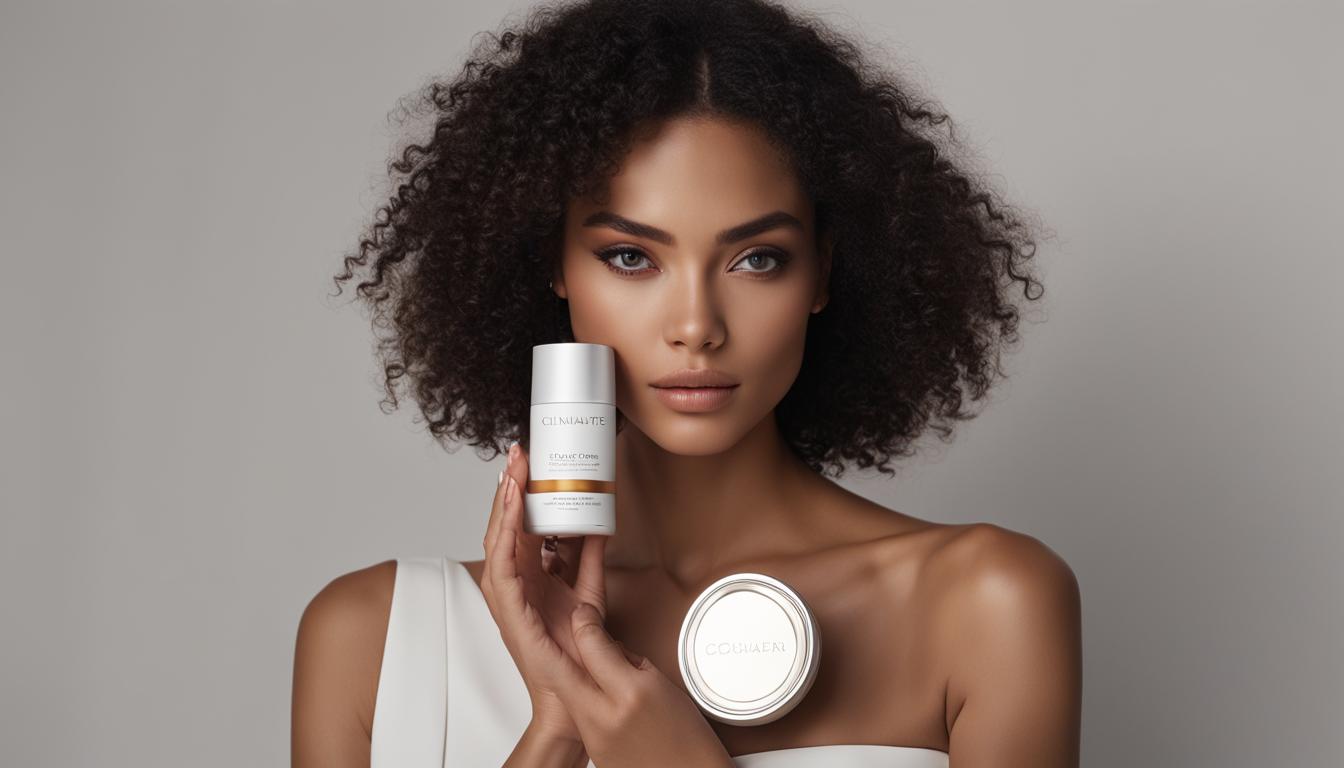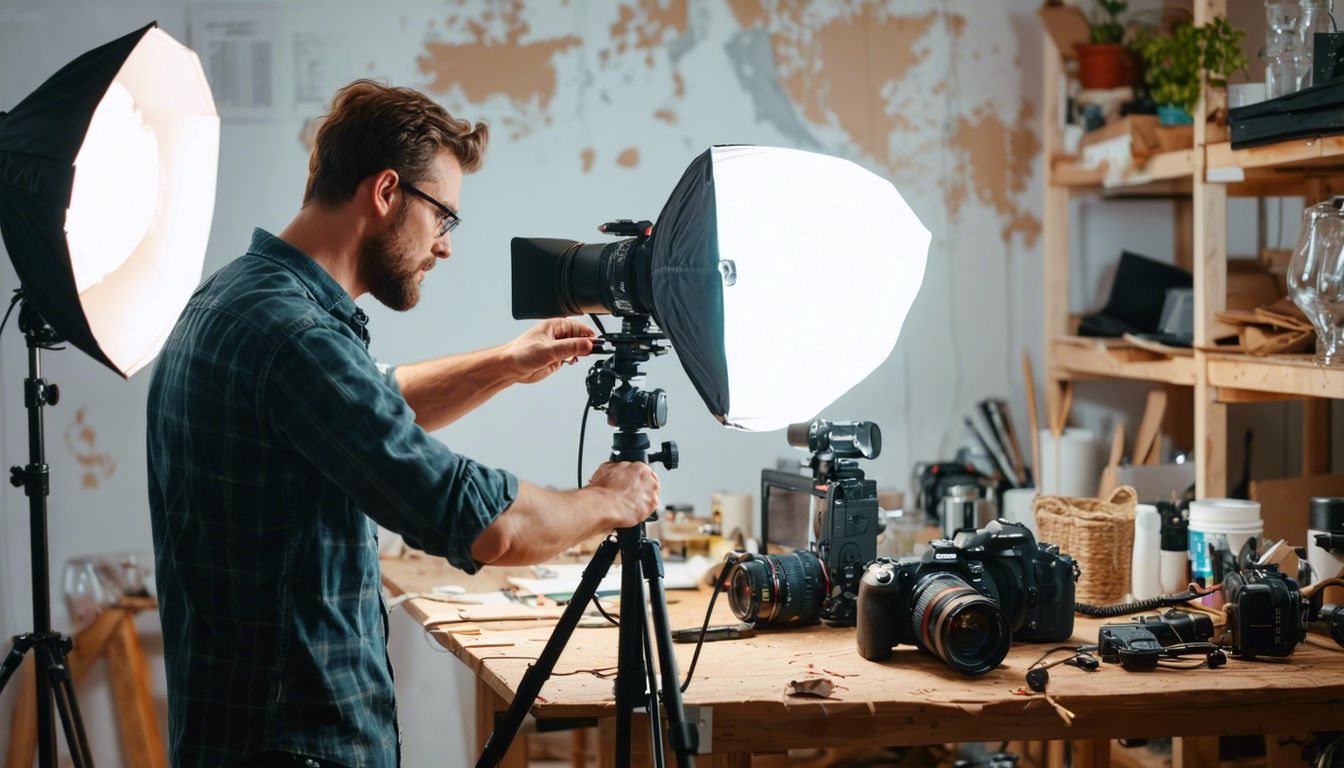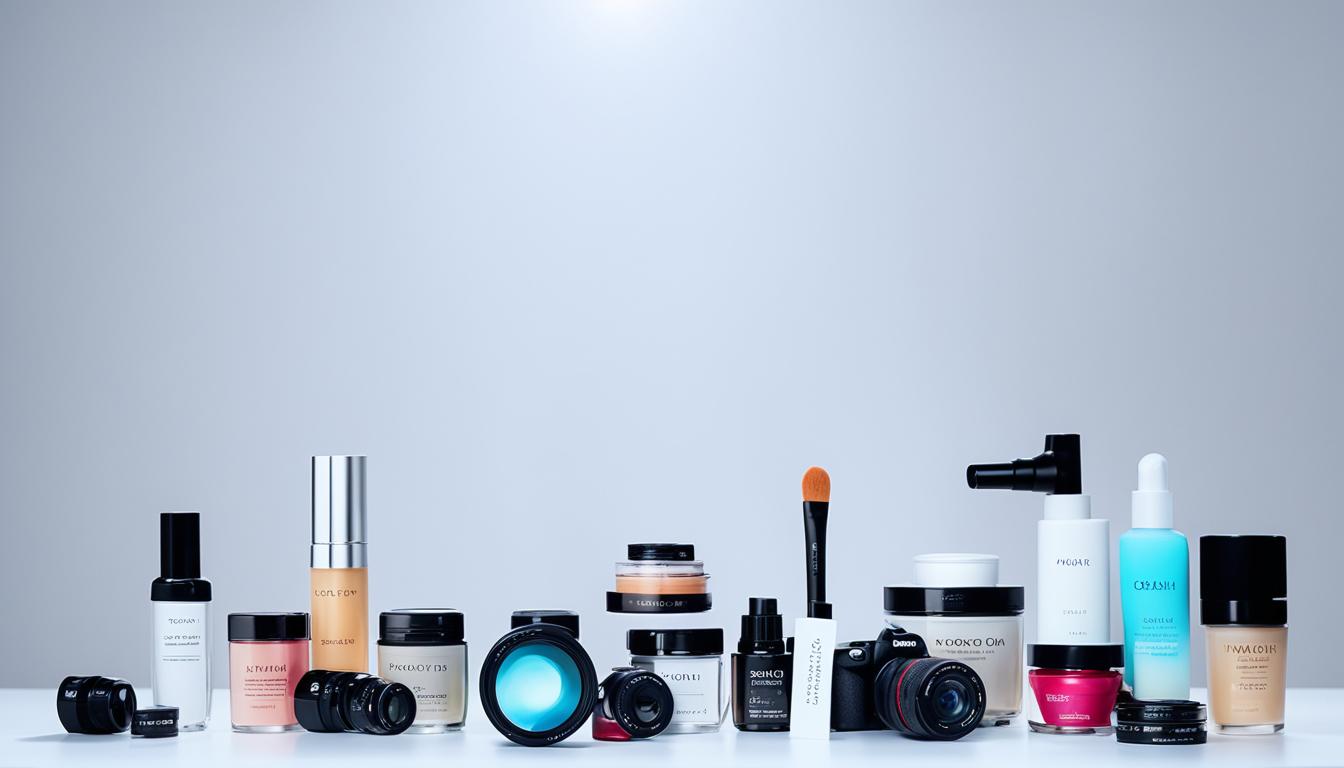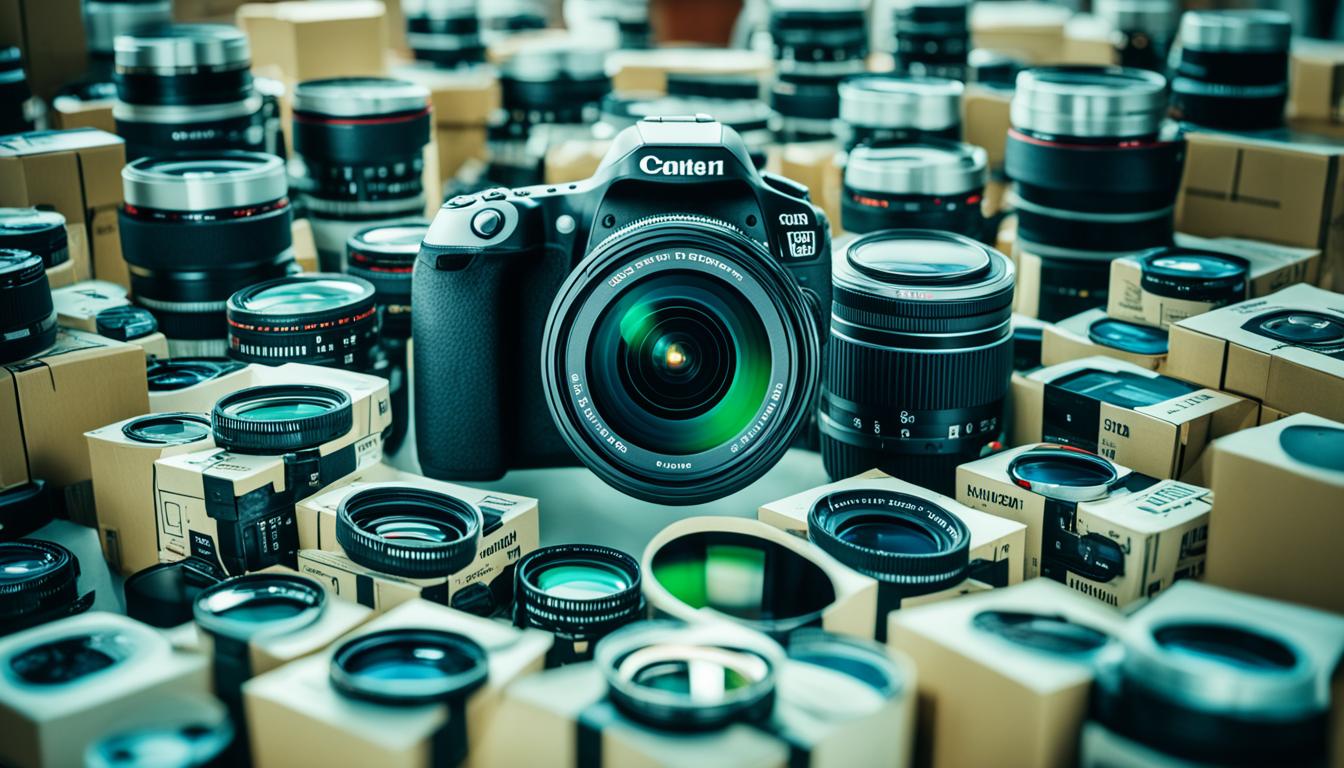Welcome to our guide on using models in product photography! Incorporating models into your product images can have a significant impact on the visual appeal and storytelling of your photographs. Not only do stock agencies and photo buyers look for images that have a “human element,” but including models can also enhance the relatability and sales potential of your products.
Throughout this article, we will provide you with expert tips and techniques on how to effectively use models in product photography. From understanding the power of the human element in photography composition to practical advice on capturing emotions in your photos, we’ve got you covered.
Key Takeaways:
- Incorporating models in product photography can add a “human element” and enhance the visual appeal of your images.
- Using techniques such as finding the right spot, incorporating motion blur, and focusing on body parts can help capture emotions and create authenticity in your photos.
- When using models, it’s essential to choose the right model that aligns with your target audience and complements the product’s features.
- Experiment with poses and gestures to showcase the product in action and create a connection with viewers.
- Consider the pros and cons of using models versus mannequins in product photography, based on your audience, budget, and brand identity.
The Power of the Human Element in Photography
Adding the human element to your photos can create a stronger connection with viewers. When photographs subtly feature people, they tend to be more appealing to buyers, evoking emotions and capturing authentic moments. This section explores various techniques and strategies to incorporate the human element into your photography composition, enabling you to capture emotions and enhance the overall impact of your images.
Finding the Right Spot
Choosing the right location is crucial when incorporating the human element into your photography. Consider the environment, lighting conditions, and background elements that can complement the human subject. By selecting an appropriate spot, you can create a harmonious composition that enhances the emotions and storytelling in your images.
Incorporating Motion Blur
Motion blur can add a dynamic element to your photographs and evoke a sense of movement and energy. Experiment with different shutter speeds to capture subtle or dramatic motion blur, depending on the desired effect. By freezing the subject within the frame while blurring the surrounding environment, you can convey a story and intensity in your images.
Utilizing Shadows and Silhouettes
Shadows and silhouettes can create a captivating visual impact in your photographs. By strategically placing your subject in front of a light source, you can capture stunning silhouettes that emphasize their shape and create a mysterious or dramatic atmosphere. Shadows can add depth and dimension to your images, highlighting the human element and enhancing the overall composition.
Focusing on Body Parts
Another powerful technique to capture emotions in photography is by focusing on specific body parts. Close-up shots of hands, eyes, or facial expressions can convey a range of emotions and tell a compelling story. By isolating these details, you create an intimate connection and draw the viewer’s attention to the human element within the frame.
By incorporating these techniques and strategies into your photography, you can capture natural and genuine shots that resonate with viewers. The human element adds authenticity, emotion, and storytelling to your images, making them more relatable and memorable. In the next section, we will explore practical tips for effectively using models in product photography.
Tips for Using Models in Product Photography
When it comes to product photography, incorporating models can be a game-changer in capturing the attention of your target audience and enhancing the overall appeal of your images. Here are some valuable tips and techniques to make the most out of using models in your product photography:
1. Choose the Right Model
It’s crucial to select a model that aligns with your target audience and complements the product you’re showcasing. Consider factors such as age, gender, ethnicity, and lifestyle to ensure a relatable and engaging visual representation.
2. Highlight the Product
Although the focus is on the model, don’t forget that the primary purpose of product photography is to showcase the product itself. Make sure the model highlights the product’s key features and benefits without overpowering it.
3. Tell a Story
Use the models in your photography to tell a story or convey a specific message about the product. The story can evoke emotions, create a connection with viewers, and enhance the overall narrative of your images.
4. Experiment with Poses and Gestures
Encourage your models to experiment with various poses and gestures to showcase the product in action. Dynamic movements can add life and energy to your images, making them more visually captivating and engaging.
5. Pay Attention to Composition, Lighting, and Editing
Composition, lighting, and editing play a crucial role in the final look and feel of your product photography. Ensure the composition highlights both the model and the product harmoniously, while lighting accentuates the desired mood and ambiance. During the editing process, fine-tune the images to enhance the colors, contrast, and overall aesthetic appeal.

Pros and Cons of Using Models vs Mannequins in Product Photography
When it comes to product photography, the decision of whether to use models or mannequins is crucial. Both options have their pros and cons that can significantly impact customer engagement and the overall success of your visual marketing strategies. Let’s explore the advantages and considerations for each.
Models
Models bring the human element to product photography, adding relatability and emotional connection to your images. Here are some key advantages of using models:
- Diversity: Models allow you to showcase your products across different demographics, appealing to a wider range of customers.
- Highlight functionality: Models can demonstrate how the product is used, showcasing its features and benefits effectively.
- Storytelling: Incorporating models enables you to create narratives around your products, conveying a specific message or lifestyle that resonates with your target audience.
- Flexibility: Working with models provides more pose and image options, giving you the freedom to experiment and capture unique shots.
Mannequins
On the other hand, mannequins offer a different set of advantages for product photography. Here’s why you might consider using mannequins:
- Show product fit: Mannequins allow you to display the fit and shape of clothing or accessories accurately, providing customers with a clearer idea of how the items will look on them.
- Maintain consistency: Mannequins ensure uniformity in product presentation, ensuring that all your images have a consistent style and aesthetic.
- Minimize distractions: With mannequins, the focus remains solely on the product itself, reducing any potential distractions that may arise from using models.
- Accommodate budget constraints: If you have a limited budget for hiring models, mannequins can be a cost-effective alternative, allowing you to streamline your expenses.
Ultimately, the decision between models and mannequins depends on your specific audience, the nature of your products, and your brand identity. Consider the image you want to portray, the story you want to tell, and the emotions you want to evoke in your target customers. A well-thought-out approach to choosing models or mannequins in product photography can go a long way in capturing customer attention, engagement, and conversions.
| Pros | Models | Mannequins |
|---|---|---|
| Diversity | ✓ | |
| Highlight Functionality | ✓ | |
| Storytelling | ✓ | |
| Flexibility | ✓ | |
| Show Product Fit | ✓ | |
| Maintain Consistency | ✓ | |
| Minimize Distractions | ✓ | |
| Accommodate Budget | ✓ |
Conclusion
Incorporating models into product photography can greatly enhance the visual appeal and customer engagement of your images. By adding the human element, you create a stronger connection with viewers, making your product more relatable and enticing. The power of emotions captured through photography can tremendously boost your sales potential.
Whether you choose to use models or mannequins, it is crucial to consider your target audience, product, and brand identity. Experiment with different techniques, compositions, and lighting to create compelling and authentic product photos that resonate with your customers. Remember, the key is to tell a story and evoke emotions through your images.
Using models in product photography allows you to showcase the product in action, adding a sense of realism and functionality. This can create a more immersive and relatable experience for viewers, ultimately driving them towards making a purchase. With the right choice of model and careful attention to the composition, you can create images that captivate your audience and boost your sales.
In conclusion, incorporating models in product photography is a powerful tool for boosting sales. By adding the human element and capturing emotions in your images, you can create a genuine connection with your customers. So go ahead, experiment with using models in your product photography, and watch your sales soar.
FAQ
How can using models in product photography enhance the visual appeal and storytelling of the images?
Incorporating models into product photography can add a “human element” that increases relatability and attracts stock agencies and photo buyers. Models can help create a stronger connection with viewers and subtly convey emotions and authenticity in the photos.
What are some tips for effectively using models in product photography?
To effectively use models in product photography, it is important to choose models that align with your target audience and complement the product features. Experiment with poses, gestures, and storytelling to showcase the product in action and create a connection with viewers. Pay attention to composition, lighting, and editing to enhance the final look of the images.
What are the advantages and considerations of using models or mannequins in product photography?
Using models in product photography can add a human element, create diversity, highlight functionality, and help tell a story. On the other hand, mannequins can show product fit, maintain consistency, minimize distractions, and accommodate a limited budget. The choice between models and mannequins depends on factors such as your target audience, product, and brand identity.
How can incorporating models into product photography boost customer engagement?
By adding the human element through models, you can create a stronger connection with viewers, capture their attention, and enhance the visual appeal and storytelling of your images. This, in turn, can lead to increased customer engagement and sales potential.
How Can Using Models in Product Photography Help Streamline a High-Volume Shoot?
In highvolume product photography streamline techniques are essential. Utilizing models brings consistency and efficiency to shoots. This approach simplifies posing, reduces editing time, and creates a uniform look across shots, allowing for rapid, cohesive product showcases that capture consumer attention.




